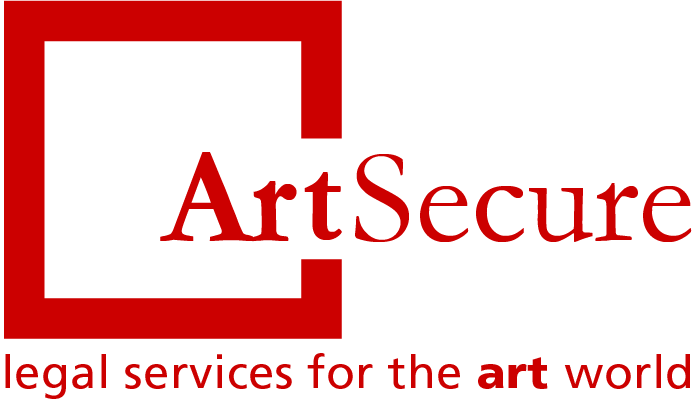A slightly different version of this article, authored by Phoebe Kouvelas, was published by Private Art Investor. You can read it here.
On 7 June 2019, Council Regulation No 880/2019 on the Introduction and the Import of Cultural Goods was published in the Official Journal of the European Union. The Regulation entered into force 20 days after publication.
The Regulation’s objective is, among other things, to ensure the prevention of terrorist financing and money laundering through the sale of pillaged cultural goods to buyers in the Union. To achieve this objective, the Regulation adopts measures to ensure that certain imports of cultural goods are subject to uniform controls upon their entry into the customs territory of the Union. Sadly, the Regulation will also complicate the buying and selling of art and archaeological objects between countries.
Which Objects are Concerned?
The Regulation does not apply to cultural goods created or discovered in the customs territory of the EU. Therefore, it mainly concerns cultural goods from East and Southeast Asia, Russia, Middle East, South and Central America, Africa and Australia. Still, the Regulation does not concern all non-EU objects. Rather, it targets (a) products of archaeological excavations or discovery as well as elements of artistic or historical monuments or archaeological sites which are more than 250 years old (considered high-risk) and (b) other items which are more than 200 years old and have a minimum financial value of EUR 18 000 (indicatively, ancient coins, paintings, sculptures, prints, lithographs, rare manuscripts, old books etc.) which are considered of lower-risk.
The import into the EU of higher-risk cultural goods requires an Import License while import of lower-risk goods requires an Importer Statement.
Import License
Those required to apply for an import license (for high-risk objects) will need to submit an application to the competent authority of the importing member state via a centralized electronic system (which is yet to become operational). Accompanying the application, the importer will have to provide evidence that the object has been exported from the country where it was created or discovered in accordance with the laws of that country (aka have an export license) or provide evidence of the absence of such laws at the time they were taken out of its territory.
Importer Statement
For objects considered of lower-risk, an Importer Statement to be submitted via the same centralized electronic system (not yet operational) will suffice. Such statement shall consist of a declaration signed by the holder of the object stating that the object has not been unlawfully exported from the country of creation or discovery. Accompanying the declaration, the importer will have to provide a standardized description of the object in question (the standard not yet determined).
The 5-Year Window
A notable derogation for both categories of objects (those requiring an Import License and those requiring an Importer Statement) is interesting. Where the country of origin cannot be reliably determined, or the export of the object took place before 24 April 1972 (the date on which the 1970 UNESCO Convention on the Means of Prohibiting and Preventing the Illicit Import, Export and Transfer of Ownership of Cultural Property entered into force), the importer need only provide evidence that the object in question was lawfully exported from the last country where it was located for more than five years.
This is certainly good news for those that legitimately own objects for which scholars have difficulty ascertaining their origin and therefore it is unclear which should be the country of export. However, it does open a window for abuse. Taking into consideration that the Regulation will not become operational before another 4-5 years (see below) smugglers may well place a looted object in one country, leave it for 5 years and then obtain an Import License invoking the 5-year rule. Further, the 5-year rule also gives ideas for “jurisdiction shopping”, meaning that one may place a looted object for 5 years in a country which may have more lenient laws on the export of cultural goods, obtain the export license once the 5-year requirement is met and import it in the EU taking advantage of this derogation.
A Few Paradoxes
As discussed above, to obtain an Import License, one needs to either have an export license or give evidence that no such license was required at the time of export. In order to satisfy either of these requirements, the importer must know the exact date that the object was exported from the country of creation or discovery.
This is rarely the case in reality. The history of ownership for objects that are of significant age usually lacks detailed documentation and often one can only assume that an object was exported by the country of creation by a certain date by connecting the dots of the available information. It may seem that the Regulation is offering two options for those applying for an Import License, when in fact, it offers none for those unsure of the exact export date (arguably accounting for the majority of cases).
Further, the frequent lack of knowledge in relation to the exact export date may also put the importer at risk of making a false declaration in their Importer Statement before the competent authorities, as the inferences on the export date derived from the information at hand may be hardly accurate. This is not a trivial matter, as the Regulation obliges Member States to impose penalties for such false statements and the submission of false information.
Compliance Obligations of the Art Market
International dealer associations have opposed the Regulation since its inception claiming that it would place a considerable administrative and financial burden on art and antiques businesses throughout Europe. Indeed, the Regulation will add operational costs by setting levels of due diligence that are hard to attain and will introduce lengthy delays (the competent authorities can take up to 90 days to decide on an import application) which will arguably slow business.
Participation in international art fairs will also be affected. Although an import license is not required for temporary admission of objects to be presented at art fairs (an importer statement suffices), nevertheless, if the object sells, the dealer would have to await receipt of the license before finalizing the deal, which could lead to a lost sale (both due to the delay itself and due to the uncertainty of obtaining the import license).
Art Market Preparations
Although the Regulation is already in force, in practice it will not be fully implemented until the rules for the centralized electronic licensing system are established (scheduled for June 2021) and the system becomes operational (expected to take another 2-3 years). Therefore, the art market does have time to prepare. Below are a few suggestions on how to do so.
For one, collectors and institutions considering to buy objects which fall under the scope of the Regulation must request export documentation and all the available provenance information.
It would also be wise for collectors and institutions to update their record-keeping practices to collect and retain as much export and transport documentation as possible. Where the previous owner is known to the possessor, they should make contact and collect any missing pieces of information relating to the object’s previous locations. It will also prove useful to start keeping records of objects in a standardized way which will include detailed information on the description, origin, dimensions and high-resolution images; this way once the Regulation’s criteria are published, it will be much easier to comply with them.
Now is also the time to conduct provenance research to document all available information on the object’s origin, history of ownership, previous publications and exhibitions as well as previous locations. As this may be time-consuming and costly, one can start by selecting the objects that are most valuable to the collection – both in terms of monetary and historic value.
Lastly, for objects whose country of origin cannot be reliably determined, one should consider taking advantage of the 5-year provision by not moving the object to another country for at least 5 years.
Author: Phoebe Kouvelas, LL.M.





